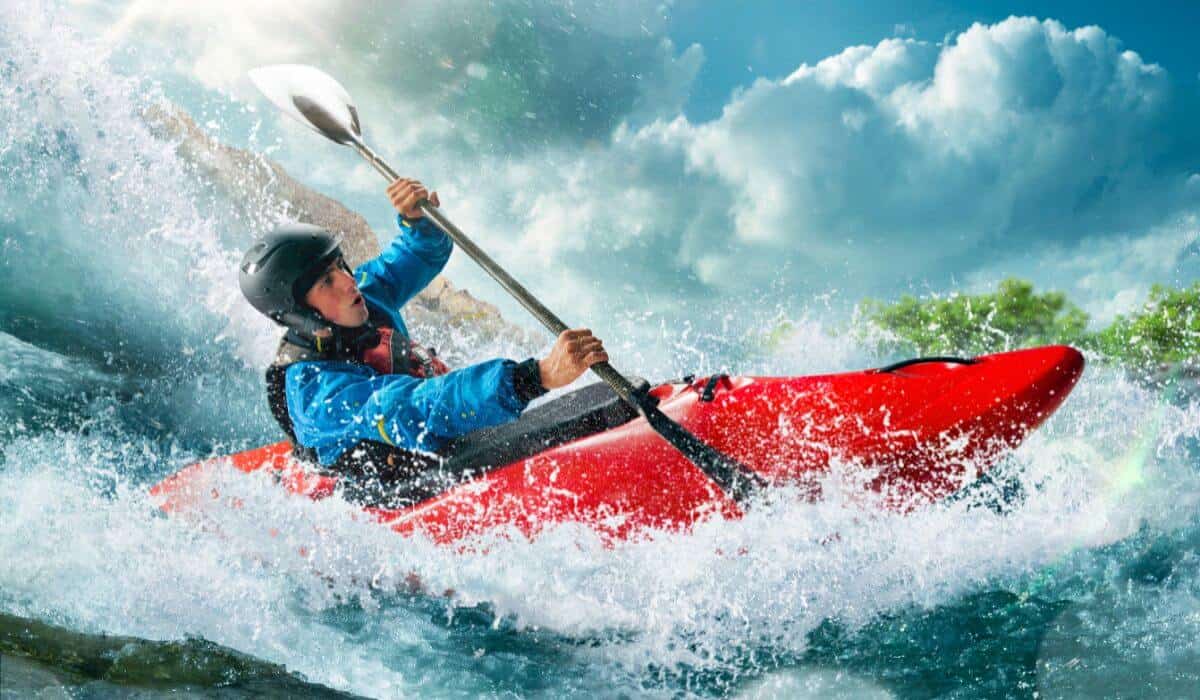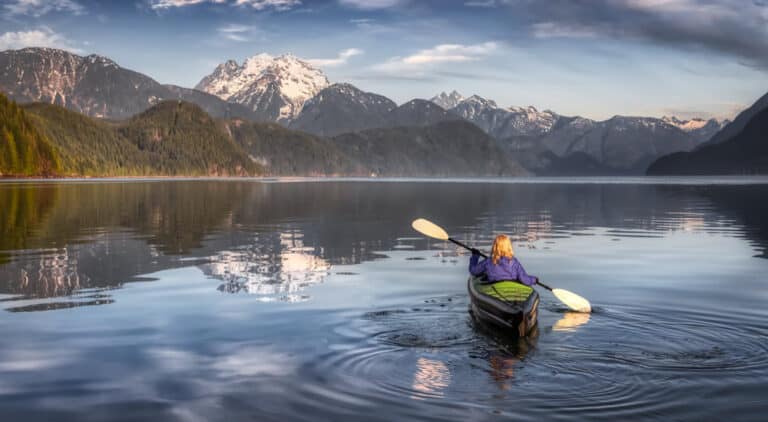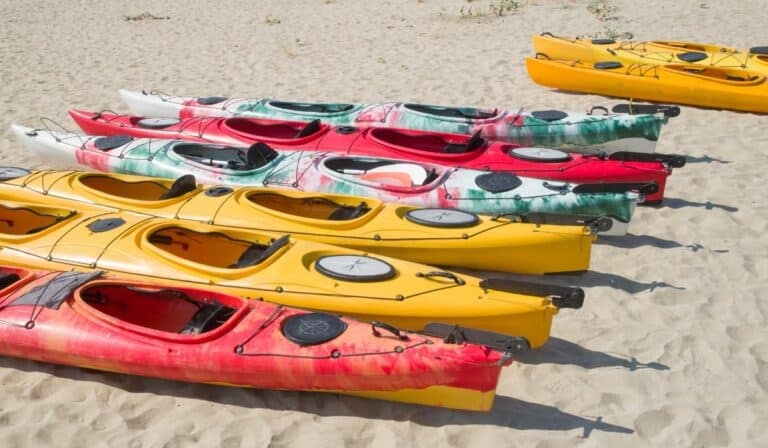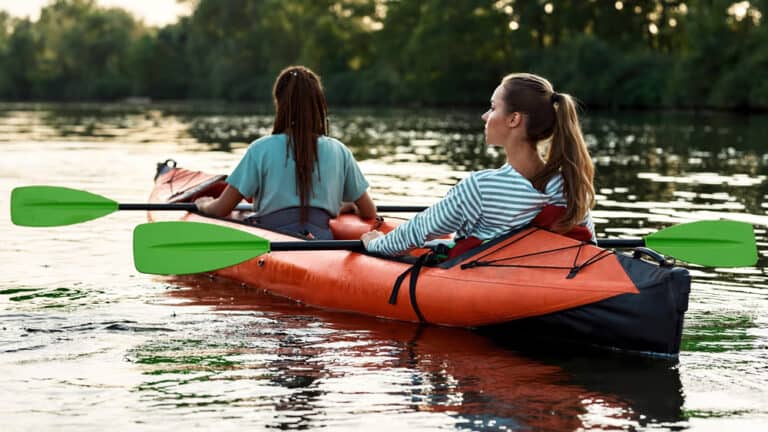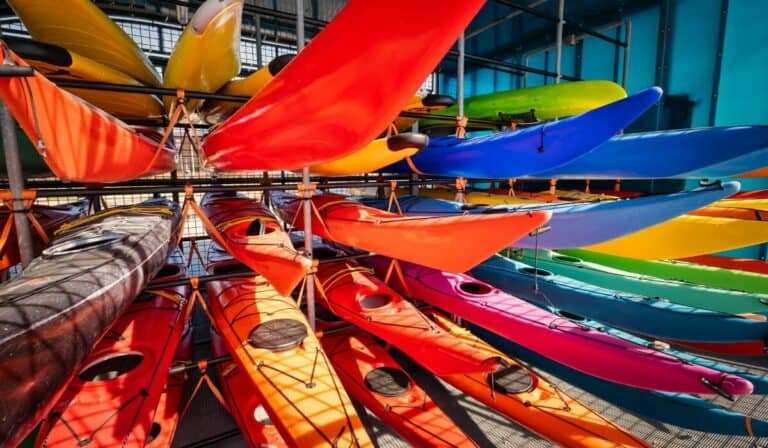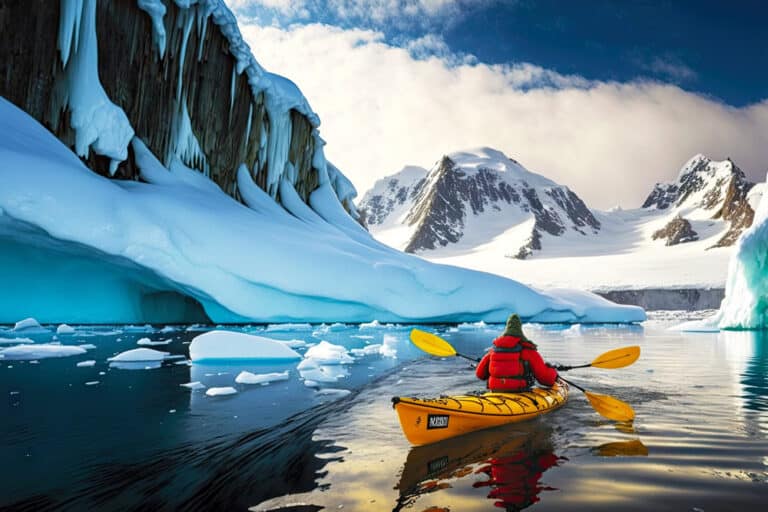Whitewater Kayaking: Tips for Thrilling Adventures
Whitewater kayaking is an exhilarating sport that offers a unique blend of adventure, challenge, and natural beauty. In this blog post, we’ll dive into the world of whitewater kayaking – from choosing the right equipment and mastering basic techniques to pushing your skills further with a river running and finding paddling partners.
For those just getting into the sport, we’ll provide a comprehensive overview of all the basics you need to know to start paddling with confidence. Experienced whitewater kayakers looking to advance their skills can discover more complex topics such as river running and finding the right paddling companions for an upcoming excursion.
You’ll also learn important safety tips on how to stay safe while out on the water including proper use of personal flotation devices (PFDs) and what steps to take if your kayak capsizes. Additionally, we will discuss upcoming whitewater events around the world where you can test your skills against other passionate river runners.
Whether you prefer a traditional hard-shell kayak or an inflatable one for easy transport, this guide has got you covered. By following these expert tips and tricks, you will be able to navigate any type of rapid with confidence and finesse.
Table of Contents
What is Whitewater Kayaking?
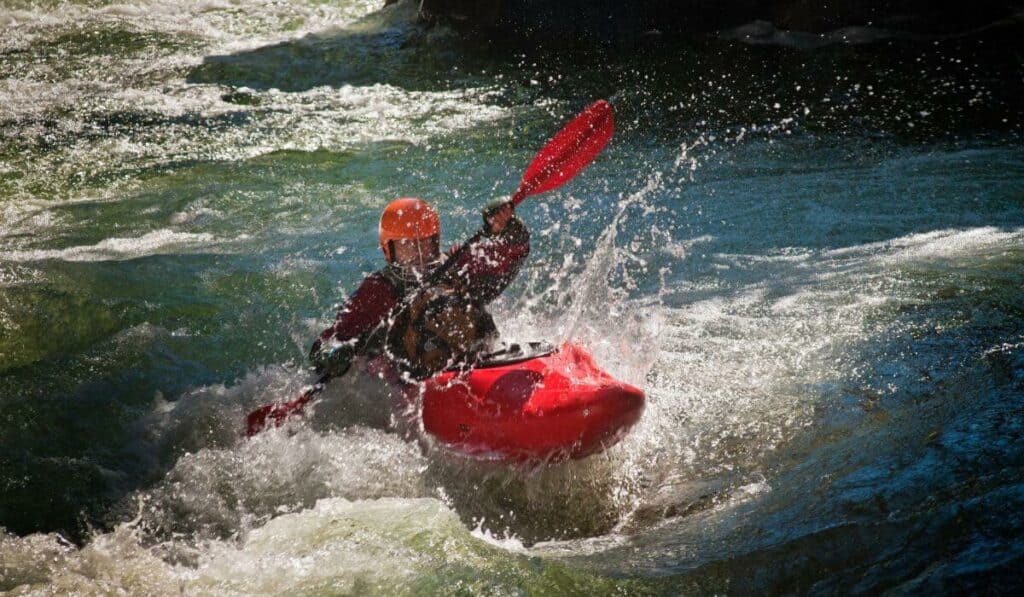
Whitewater kayaking offers an exhilarating and demanding experience of navigating waterways like rivers, creeks, and lakes. It necessitates expertise, vigor, and staying power in addition to comprehension of the river’s surroundings. Whether you’re a beginner or an experienced paddler looking for new thrills, whitewater kayaking can be a great adventure.
Types of Kayaks For Whitewater
When it comes to whitewater kayaks there are two main types: recreational and performance boats. Recreational boats are designed for beginners who want stability on the water while learning basic skills such as turning and edging in slow-moving waters. Performance boats have narrower hulls which makes them faster but less stable than recreational models – perfect for those seeking more advanced techniques like surfing waves or running rapids.
Before hitting the water you’ll need some essential gear including a helmet, life jacket (PFD), spray skirt (to keep your lower body dry), paddle float (for self-rescue), whistle/signal device (in case of emergency), and throw rope with carabiner clips to help others if needed. Be sure to equip your vessel with footrests/pedals so you can alter your seating in the cockpit while navigating varying streams and hindrances.
Before setting off, it’s critical to have a firm grasp of the river dynamics – its current speed changes, potential obstacles, and rock formations at certain points – so you can successfully navigate around them with ease.
Finally, don’t forget about safety. Always wear a helmet when kayaking – even if just practicing in flat water. Check local regulations regarding boating restrictions in advance of launching into any river system or lake area. Never go alone – bring friends who know what they’re doing. Get familiar with weather conditions before launch time and avoid alcohol consumption while out on the water since it impairs judgment and coordination which are both key components necessary for successful navigation downriver.
Whitewater kayaking offers a thrilling ride through the rapids, an exciting and demanding pursuit that will take you on an exhilarating journey. To guarantee a successful experience, careful preparation and forethought are key for your initial whitewater kayaking expedition.
The Key Takeaway: Kayaking in whitewater is an energizing and testing action that necessitates ability, power, comprehension of the stream environment, and suitable security hardware. Paddlers must be aware of their surroundings to navigate rapids safely while avoiding obstacles along the way – so don’t forget your helmet and keep alcohol consumption at bay.
Preparing for Your First Whitewater Kayak Trip
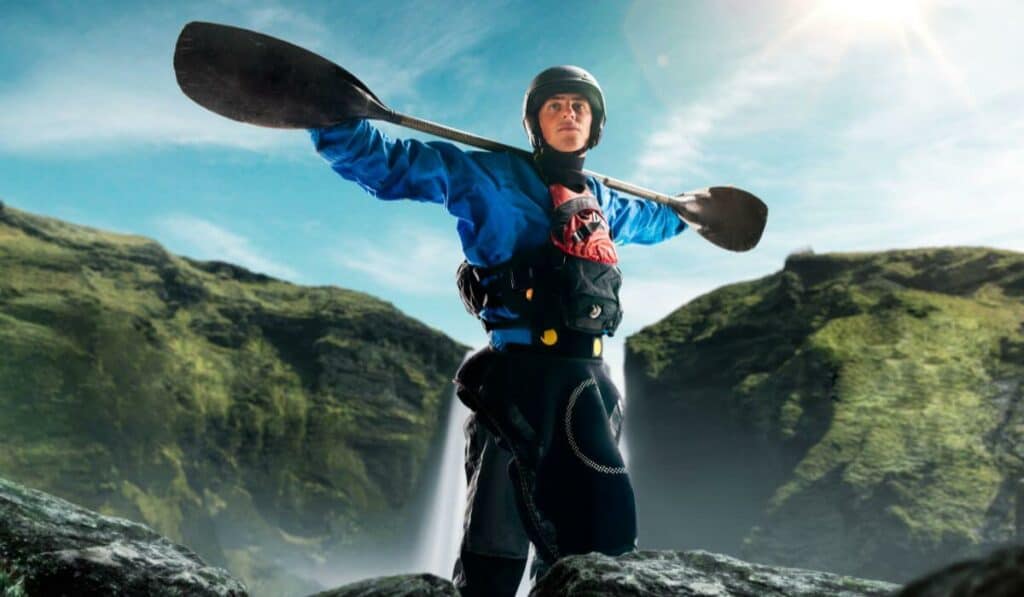
Before you take your first whitewater kayaking trip, it’s important to be prepared. Prioritizing security should be the top concern when engaging in any kind of aquatic activity. Here are some tips on how to get ready for a successful and safe whitewater kayak experience:
Gear Up:
Before heading out, make sure you have all the necessary gear including a life jacket, helmet, and spray skirt. Additionally, bring extra clothing in case you get wet or cold during your journey. Don’t forget snacks and plenty of water.
Practice Paddling Techniques:
Kayaking is an art that takes time to master. Take some time before your trip to practice paddling techniques such as forward strokes, sweeps, draws, bracing, and turning maneuvers like the J-stroke or C-stroke so you can stay in control while navigating rapids or turbulent waters.
Learn About River Hazards:
Familiarize yourself with potential hazards on rivers such as strainers (downed trees), hydraulics (holes created by fast-moving water), and eddies (calm areas behind rocks). Knowing what these look like will help keep you safe if encountered on your journey.
Be Aware of Weather Conditions:
Pay attention to weather conditions before embarking on your trip; strong winds can create dangerous waves which can capsize even experienced paddlers. Also, check river levels since too much rain could mean high flows making navigation more difficult than usual.
Understand Water Flow Direction:
Kayakers must understand how current affects their boat direction – upstream currents will push them away from their destination while downstream currents will pull them closer to it. Be aware of this when planning routes so that you don’t end up going in circles.
If other people are joining your adventure, make sure everyone knows where they are going and communicates regularly throughout the day. If someone becomes separated, they should be aware of who to reach out to and where for aid.
Preparing properly and having the right safety gear can help ensure your initial whitewater kayaking excursion is both secure and enjoyable. Once you have established your skill level, it is essential to comprehend the varying levels of difficulty to choose an appropriate type of whitewater.
The Key Takeaway: It is essential to be prepared for a whitewater kayaking trip, including having the necessary gear and knowledge of river hazards. Paddlers should practice their techniques before embarking on their journey, as well as be mindful of weather conditions and water flow direction so they don’t get caught in a bind.
Exploring Different Types of Whitewater
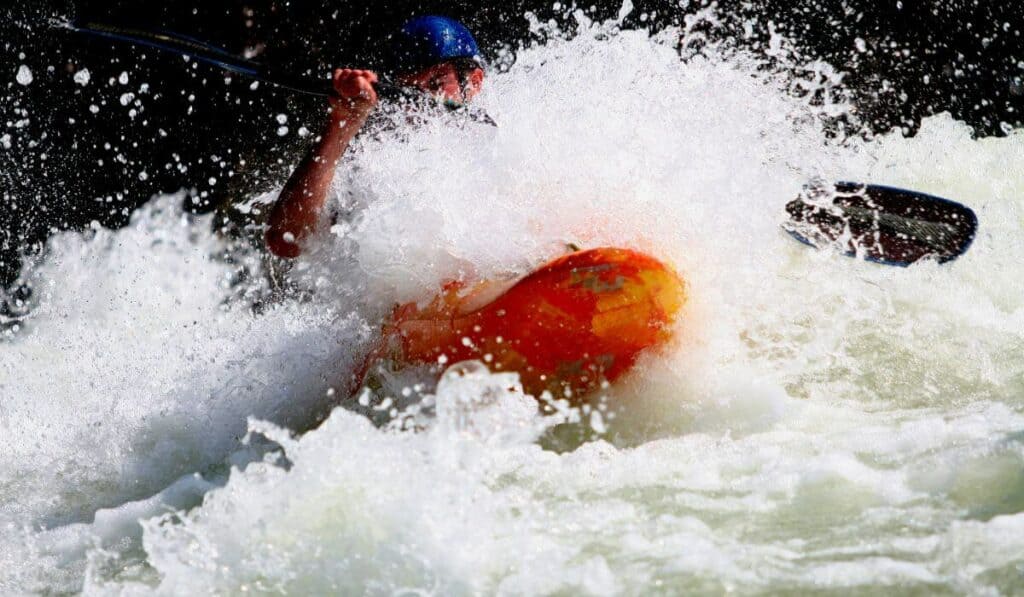
For the experienced kayaker, whitewater provides an exhilarating way to experience nature. Whether you’re a beginner or a seasoned pro, different types of whitewater can be enjoyed. From easy rapids to more challenging runs, let’s take a look at what type of whitewater kayaking awaits you.
Class I:
Class I rapids are considered the easiest and most mild. They usually have small waves with minimal rocks and few obstructions in the waterway. These gentle rapids make for great introductory runs for beginners who want to get their feet wet without feeling overwhelmed.
Class II:
The next step up from class I is class II rapids which feature larger waves and some obstacles such as boulders or fallen trees in the waterway. These types of rapids require slightly more skill than class I but remain relatively tame enough for novice paddlers looking to challenge themselves further.
Class III:
Moving on up, we come to class III rapids which offer more technical challenges such as tight turns and strong currents that require advanced maneuvering skills from experienced paddlers. While these runs may seem intimidating at first, they can also provide thrilling experiences when tackled properly by experienced boaters.
Class IV:
Class IV whitewater consists of even more complex maneuvers including large drops, powerful hydraulics (eddies), and steep gradients that require extreme precision and expertise from those brave enough to tackle them head-on. Only expert-level boaters should attempt this type of run due to its inherent danger if not done correctly.
Class V+:
Finally, we have class V+ which is reserved only for experts who understand how dangerous these waters can be if handled incorrectly or carelessly – this type requires utmost respect when approaching it due to its hazardous nature. Even though these kinds of runs are rarer than others they still exist so it pays off to know where they are located before attempting one – no matter your experience level.
So grab your paddleboard, throw on your wetsuit, lace up those life jackets, and get ready for some serious fun exploring planet earth’s amazing riverscapes through whitewater kayaking adventures today.
Venturing into different types of whitewater can be an electrifying way to appreciate the magnificence and vigor of nature. Enjoying the thrill of whitewater kayaking offers a unique opportunity to push your boundaries and explore new heights.
The Key Takeaway: Head out on the rapids and take your whitewater kayaking skills to the next level. From class, I for beginners, all the way up to expert-level Class V+ runs, explore riverscapes around the world with an adrenaline rush of a lifetime. So strap in and get ready – it’s time to hit those waves.
Enjoying the Thrill of Whitewater Kayaking
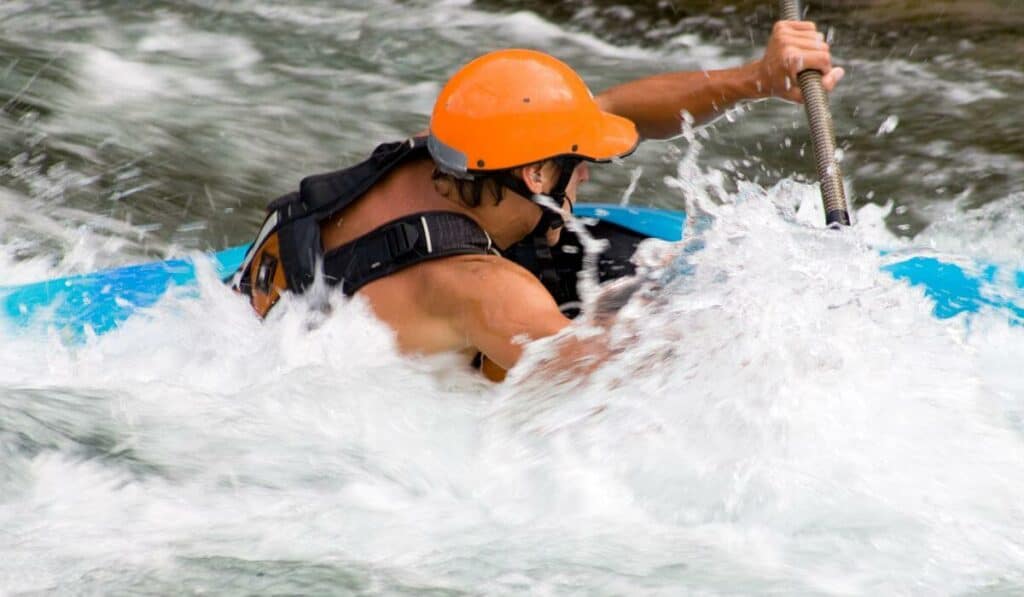
The adrenaline rush that comes with tackling challenging rapids, navigating through narrow passages, and conquering obstacles can be incredibly satisfying. Whitewater kayaking is an awesome activity to experience the natural world while having a blast in a secure atmosphere.
When prepping for a kayak journey, it’s essential to have the correct safety gear like life vests, helmets, and wetsuits/drysuits as needed. Planning to account for water conditions and potential hazards, such as strainers, is essential to ensure a safe kayaking experience. Knowing how to read river levels and recognizing hazards like strainers (logs or debris blocking part of the river) can help keep everyone safe on the water.
Exploring different types of whitewater can give kayakers a chance to test their skills in various environments ranging from flatwater lakes and slow-moving streams up to class IV+ rapids depending on experience level. Whether it’s paddling down calm waters surrounded by lush forests or taking on roaring rivers full of boulders and drops, there is something for everyone when it comes to whitewater kayaking adventures.
Whitewater kayaking provides endless opportunities for learning new techniques along with pushing boundaries physically and mentally, all while enjoying some good old-fashioned outdoor fun. Taking time between runs allows one to reflect on their experiences while connecting with nature around them in ways they wouldn’t otherwise get at home or work – this connection helps bring people closer together, making each adventure even more special than before.
The Key Takeaway: Whitewater kayaking is an exhilarating way to explore the outdoors, offering a great mix of thrills and nature appreciation. With proper safety gear and knowledge, even advanced-level professionals with an IQ of 150 can take on challenging rapids while connecting with their surroundings in ways they wouldn’t otherwise experience at home or work.
FAQs about Whitewater Kayaking
What is whitewater kayaking called?
White water kayaking is a thrilling and exciting sport that involves navigating rapids in a small, maneuverable craft. It requires skill, knowledge of the environment, and specialized equipment such as helmets, life jackets, spray skirts, and paddles. The term for this type of kayaking is whitewater or river kayaking which refers to any activity involving running rapids on rivers with waves up to 6 feet high. This extreme form of recreation can be enjoyed by all levels from beginner to expert.
What injuries can you get from whitewater kayaking?
Whitewater kayaking can be an exhilarating experience, but it is important to recognize the potential risks that come with it. Common injuries that may occur while white water kayaking include cuts, bruises, scrapes, sprains/strains of muscles or ligaments in the arms or legs due to contact with rocks and other obstacles; dislocations from falls into shallow rapids; head trauma resulting from collisions with objects such as rocks and trees; hypothermia due to cold temperatures in the river or lake; sunburns from exposure during long days on the river. It is also possible for more serious injuries including broken bones and concussions if paddlers are not wearing proper safety gear. It is essential to be cognizant of the potential hazards and take suitable steps when engaging in whitewater kayaking.
What is different about a whitewater kayak?
A white water kayak is a specialized type of kayak designed for navigating turbulent waters. It has a shorter and wider design than traditional sea or touring kayaks, providing greater stability in rapids and allowing for better maneuverability. The hull also features an upturned bow that helps it cut through the waves more efficiently, while its higher volume provides increased buoyancy to keep the paddler afloat even when facing strong currents. White water kayaking can be a thrilling and demanding experience, offering an exciting blend of features.
Conclusion
With a little bit of preparation, anyone can have fun on the rapids. For the novice and veteran alike, whitewater kayaking offers a variety of experiences to suit all levels of skill. Gear up and prepare for a wild ride as you take on the rapids of nature’s mightiest waterways!
Join us at SunWaterDirt.com and explore the world of whitewater kayaking! From tips on gear to advice on technique, we have everything you need to make your next outdoor adventure a success.

